Need bike parking? No sweat
November 16, 2011
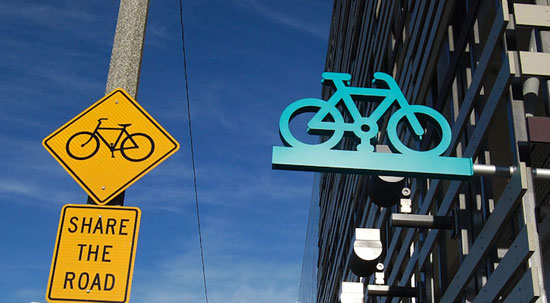
Santa Monica's new Bike Center is a sign of the times, offering new resources to folks who cycle to work or play.
Portland may get all the bicycle buzz, but Southern California cyclists can lay claim to some bragging rights, too, as Santa Monica on Friday opens what’s billed as the largest bike parking facility in the country.
The Santa Monica Bike Center will provide cyclists with secure bike storage, rentals, repairs and more. The ribbon cutting ceremony will take place Friday, November 18, at 10 a.m., and will be followed by open houses from 11 a.m. to 5 p.m. on Friday, Saturday and Sunday.
Up to 260 regular customers can reserve personal locking stations and showers for $15 monthly or $99 annually. Lockers and towels will be available at additional cost. (See the website for full membership details, including 24/7 access to the secure bike parking area.)
For all users and visitors, the center will provide other services like bike and Segway rentals, retail supplies, self-service air and repair station, and a “bike valet”—just drop off your wheels and they will be safely stored under supervision.
The center will also be used for special events, cycling classes and bike tours, all part of a plan to show people the upside of choosing transportation that is greener, healthier and, in many cases, just as fast as driving.
“InSanta Monica, a bike is really time-competitive with a car for most trips,” said Lucy Dyke, deputy director for special projects for the City ofSanta Monica. “Our streets are very congested.”
Josh Squire, CEO of Bike & Park, which operates the Santa Monica Bike Centerand others like it nationwide, said it is the highest-capacity bike parking facility in the country.
The bike center is located at Colorado and 2nd Street—next to the future site of the Expo Line’s westernmost station. The light rail line eventually will connect downtown L.A. to Santa Monica. Phase 1 is nearing completion, and an initial segment—from downtown to La Cienega/Jefferson—is expected to open early next year. (Check out this guided video sneak preview with Supervisor Zev Yaroslavsky.) Phase 2, which broke ground in September, will extend the line from Culver City to Santa Monica.
The Los Angeles County Metropolitan Transportation Authority partnered withSanta Monica in 2007 to create the $2 million dollar bicycle transit hub. Metro funded $1.5 million and Santa Monica pitched in the remaining $500,000.
Posted 11/16/11
Saluting veterans in every way
November 9, 2011
This Friday, November 11, Los Angeles County joins the nation in lauding the military men and women who’ve served our country. Ceremonies, parades and other special offerings are planned to honor current and past members of the armed forces.
Veterans Day events ranging from solemn to festive will give onlookers a chance to reflect on the importance of military service and to remember those who have passed away. Among the observances is a community ceremony at 11 a.m. at Forest Lawn’s Memorial Park in the Hollywood Hills, featuring music, skydivers and a military vehicle display. Also at 11 a.m., Malibu pays tribute in Legacy Park with remarks from veterans, a U.S. Navy flyover and a parade of colors courtesy of Pepperdine University’s Reserve Officers Training Corps.
In the San Fernando Valley, the annual parade begins at 11:11 a.m., departing from San Fernando Mission Boulevard and Laurel Canyon Boulevard and ending at Ritchie Valens Recreation Center and Park in Pacoima, where a street carnival will be held.
Beyond the parades and formal observances, recreational possibilities include a special deal from the L.A. County Department of Parks and Recreation, which is offering half-off greens fees at all county-operated golf courses for veterans with proper ID. In Long Beach, the Aquarium of the Pacific will offer free admission to veterans, military, police and firefighters.
In addition to local discounts and deals, national corporations are increasingly organizing holiday promotions to honor and benefit veterans as well. From cereal companies to restaurant chains to home improvement stores, brands are offering freebies and discounts to veterans, and in some cases are donating to nonprofit support organizations including the Wounded Warrior Project and the United Service Organizations (USO).
The L.A. County Department of Military and Veterans Affairs has compiled an extensive list of special offers and observances across the county this Veterans Day.
Posted 11/9/11
Dancing on flower power
November 9, 2011
Donna Sternberg & Dancers is a Santa Monica-based group that likes to rustle a few leaves. This Sunday, they’ll take their site-specific, eco-conscious dance style to the Baldwin Hills Scenic Overlook.
“The Flowering of Desire” is the first in a series of performances devoted to the idea of desire in the plant world—the allure of flowers, the sweetness of fruit and procreation by spreading seeds and pollen with wind, animals and insects. Live music will be provided by composer and motorcycle enthusiast Ken Christianson.
The performance also seeks to connect dance and science. Margot Griswold, an Audubon ecologist, will talk about the natural setting of the dance, now restored after years of oil drilling and neglect.
This free event is sponsored in part by the Los Angeles County Arts Commission, and takes place Sunday, November 13, at 3:30 p.m. Baldwin Hills Scenic Overlook is located at 6300 Hetzler Road in Culver City. Take a short hike after the show and you might just catch the setting sun from the lookout point.
Posted 11/9/11
California, by design
November 8, 2011
Lots of art isn’t found in museums, galleries or collections, but in things we see and use in our daily lives. Learn how California artists helped shape our world as the Los Angeles County Museum of Art presents “The Legacy of the California Design Exhibitions: Creating a Forum for Craft and Design” on Saturday, November 12.
The free, day-long program features documentary screenings, interviews and panel discussions with artists and curators of the influential California Design exhibitions, held at the Pasadena Art Museum from the 1950s to 1970s. These exhibitions are being revisited now in LACMA’s California Design, 1930-1965: “Living in a Modern Way.” It’s part of the massive “Pacific Standard Time” initiative taking place in many venues around the county.
One of those venues is the Craft and Folk Art Museum, just down the block from LACMA, which offers a peek at California artists’ influence on crafts in a companion exhibit, The Golden State of Craft: California 1960–1980. Also on Saturday, the museum is hosting “Wired Up,” an educational event where participants can see how wire was used in the objects on exhibit, and try their hand at creating wire sculpture themselves. Admission is $5.
The LACMA design forum runs from 9:30 a.m. to 4 p.m., and Wired Up is from 12:30 to 2:30 p.m. LACMA is located at 5905 Wilshire Boulevard, and the Craft and Folk Art Museum is at 5814 Wilshire Boulevard.
Posted 11/8/11
Gaga for night trains
November 8, 2011
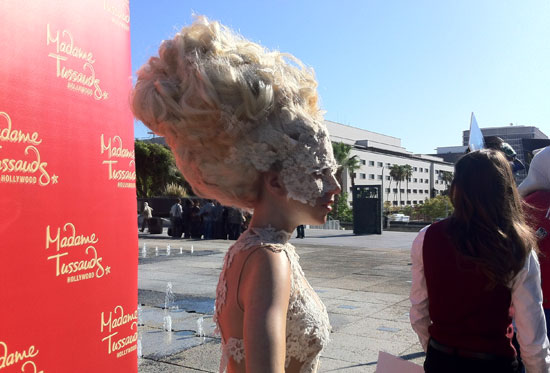
A faux Lady Gaga and a contingent of real celebs showed up to promote Metro's new ridership initiative.
Whether your taste runs more to seeing an incredibly lifelike Lady Gaga at Madame Tussauds or to swimming with sharks at the Aquarium of the Pacific, Metro has a holiday season gift for you—more frequent night trains to popular Los Angeles County destinations starting Sunday, November 13.
Metro’s board chair, Los Angeles Mayor Antonio Villaraigosa, announced today that the agency’s busiest rail lines—the Red and Purple line subways and the Blue Line light rail—will be stepping up their service between 6 p.m. and midnight. Trains will run every 10 minutes or so—double the current frequency—thanks to a trial program that involves running shorter trains more often.
If it’s successful, the program may be extended to other lines next year.
The night trains were announced at a news conference at the Music Center attended by representatives of arts, sports and entertainment venues—including a teenaged cellist and violinist from the Colburn School, a scuba-suited aquarium board member and the L.A. Kings’ mascot, along with that realistic Lady Gaga mannequin.
The new night service coincides with a series of discounts being offered at an array of participating venues. (Click here for more information.)
To make sure the trains are safe, Villaraigosa said more sheriff’s deputies have been brought in recently, and added that crime on the system overall has declined about 5%.
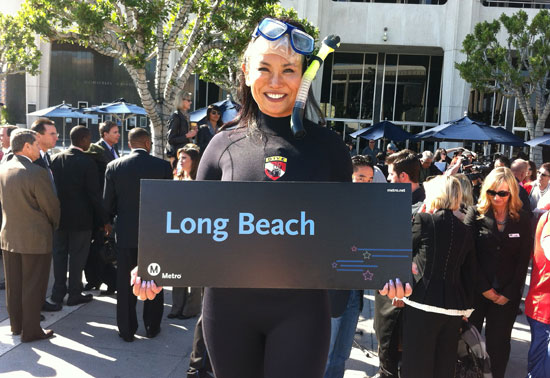
Patricia Wang of the Aquarium of the Pacific in Long Beach encourages night visits via the Blue Line.
Posted 11/8/11
Test driving Expo Line, 11/11
November 6, 2011
As the Exposition Light Rail Line rolls closer to becoming a reality, Supervisor and Metro Board Member Zev Yaroslavsky recently hopped aboard one of the test runs. Early next year, trains are expected to run from the 7th Street Metro Center downtown to La Cienega and Jefferson. Meanwhile, construction will continue on Phase 1′s westernmost station in Culver City. Eventually, Expo Phase 2 will extend to 4th Street and Colorado Avenue in Santa Monica. When it’s complete, the 15.2-mile line will be the first mass transit rail project on the Westside since the Red Cars.
Posted 11/06/11
Catching an early bird Expo Line ride
November 6, 2011

This is only a test—but not for long. As the Exposition Light Rail Line rolls closer to becoming a reality for Los Angeles transit customers, operators are now trying out the trains daily on portions of the new route. (Details on the test runs—from Flower and 23rd Street to La Cienega and Jefferson Boulevard—are here, along with safety tips.)
Supervisor and Metro Board Member Zev Yaroslavsky recently hopped aboard one of the test runs. The view from the train made it clear, he said, that getting from Point A to Point B will be only part of the Expo Line’s journey. As new routes connect with existing lines, entire regions of Los Angeles County are becoming accessible via public transit.
“Every one of these lines is another tipping point,” Yaroslavsky said.
All the test runs are a prelude to opening the first leg of the line early next year. Initially, trains are expected to run from the 7th Street Metro Center downtown to La Cienega and Jefferson. Meanwhile, construction is continuing on Phase 1’s westernmost station in Culver City.
This interactive map provides a preview of some of the cultural attractions, employment centers and educational institutions along Phase 1 of the route—including USC, the Natural History Museum, the California Science Center, the California African-American Museum and the Los Angeles Memorial Coliseum.
Eventually, Expo Phase 2 will extend all the way to 4th Street and Colorado Avenue in Santa Monica. Ground was broken on that phase a couple months ago. When complete, the 15.2-mile line will be the first mass transit rail project on the Westside since the Red Cars.
Posted 11/6/11
Coroner cleans up at awards time
November 3, 2011
Los Angeles County appreciates efficiency, and the coroner has the evidence to prove it.
After DNA revolutionized forensic science, criminal cases that had been “cold” for years suddenly got warmer. Law enforcement agencies formed special units to take fresh looks at them, and coroner’s Evidence Control Unit, which keeps material from more than 60,000 homicides, found itself flooded with requests.
Before 2008, that evidence was stored warehouse-style, each piece catalogued numerically. Evidence from one homicide could be spread across several rooms within piles of other evidence, which made gathering it a time-consuming chore. Before the widespread use of DNA testing, the evidence unit received very few requests from police, so easy access wasn’t a priority. In most cases, law enforcement agencies didn’t even know the evidence was there.
Enter Michelle Sandberg. In 2008, Sandberg, who was working as a toxicologist, was chosen to bring the unit into the new era, to meet the new demand. Due to budget constraints she could not hire extra hands, so she enlisted volunteers from universities and the military to help her and two other staffers come up with a new way of doing business.
Their efforts paid off. On October 19, the evidence control unit makeover will be honored as one of the ten most innovative programs in the county at the 25th Annual Productivity and Quality Awards luncheon. The top three programs among them will win Bronze, Silver and Gold Eagle awards. Winners can then submit applications for awards from the California State Association of Counties and the National Association of Counties.
This year’s other honorees range from a groundwater reclamation program that saves an estimated $236 million annually to a free-for-taxpayers high school STD prevention program that has health and educational benefits that aren’t easily monetized.
The awards are presented by the county’s Quality and Productivity Commission. Over the past 25 years, the programs it has recognized have saved taxpayers an estimated $3.6 billion. Winners are also highlighted in an annual multimedia report, which promotes “best practices” countywide. (See last year’s report here.)
Ruth Wong, executive director of the commission, said the goal is to inspire copycats. “What we are hoping is that all or part of these projects will be picked up by other departments. We want them to spread.”
Already, news of the evidence unit’s success is spreading. The National Institute of Justice sent a representative to have a look at Sandberg’s shop two weeks ago. Sandberg, now acting supervising criminalist, and the director of the coroner’s office, Anthony T. Hernandez, have been invited to Washington, D.C. this March to address the Working Group for Medicolegal Death Investigation, which establishes nationwide standards for evidence management.
She will explain how her team tackled the problem, organizing the evidence in “kits” for each case. Each was labeled with a case number and a list of contents, and added to a computer database shared by 145 agencies nationwide. The Los Angeles Police Department and the L.A. County Sheriff now work closely with the unit, lending staff and advice.
Sandberg’s system has become so efficient that she has started contacting law enforcement agencies herself so they can “come get their stuff.” Out of the 280,000 pieces of evidence her unit housed, only 30,000 remain. As a result of that effort, 41,000 cases have been processed in two years, and decades-old murders and rapes have been solved.
Recognition for her unit’s transformation is great, Sandberg said, but even more gratifying is the sense of contributing to those successful investigations. “It is rewarding because of the work the detectives have done on the cases, using the evidence,” she said. “There is justice for the victims’ families and for all the people who have worked so hard to get it.”
Posted 10/6/11
The greening of L.A.’s Civic Center
November 3, 2011
The giant yuccas haven’t moved in yet, and neither have the California Pepper, Japanese Pagoda or Strawberry Snowball trees.
But make no mistake, the downtown park project is definitely entering its green period.
The first trees are now taking root in the 12-acre expanse in the heart of the Civic Center—the first visible manifestation of the ambitious Grand Avenue Project intended to create a cultural and civic sense of place in downtown Los Angeles. Since July, 50 of 373 new trees have been planted, joining the 95 that were left in place on the site when work began in 2010. (Many of the new trees are varieties of palm, and there also are dozens of California sycamores and Tipuana tipu trees in the arboreal lineup, along with eight coast live oaks and a wide range of other varieties.) Landscaping on the project is expected to continue through next May.
The park, scheduled to open next summer, will represent a dramatic transformation of a once banal stretch of downtown public space, creating an “iconic” and “spectacular” gathering spot for diverse activities ranging from picnicking to big-screen musical simulcasts. Stretching in three sections from the Music Center to City Hall, the park’s ADA-accessible ramps will complement a series of stairs, terraces and lawns.
The tree planting has picked up pace lately. Newly-installed palm trees (some weighing 15,000 pounds each) and silvery-leafed olive trees are now ensconced near the park’s new Starbucks building (which adds its own blast of green to the landscape thanks to its bright chartreuse slanted roof.)
The Board of Supervisors this week approved an amended 10-year agreement with Starbucks increasing the company’s monthly rent to reflect the new, larger 1,195-square-foot space; it will go to $3,585, from $2,250. Since business is expected to increase once the new park is open, the county—which will receive 6% of the coffee concession’s annual gross sales above $717,000—anticipates that its take will go up as well. The total annual revenue for the county, including the rent, is projected to be about $70,800 a year, the report said
The current Starbucks, long a fixture of daily life for jurors and Civic Center employees, will be leveled when the new facility is ready for business.
Also coming down soon will be the wooden barricades and concrete “k-rail” barriers that have closed off the Grand Avenue end of the project for months. The Grand Avenue sidewalk, which also has been closed, will be reopened on Monday, November 14, along with a mid-block crosswalk that leads to the Music Center and the Grand Avenue ramps to the Hall of Administration parking lot.
Dawn McDivitt, who is overseeing the project for the county’s Chief Executive Office, said other signs of progress also are on the way. For example, she said, one of the park’s hallmark features, the restored Arthur J. Will Memorial Fountain, should be ready for testing around the first of the year.
“It is exciting to see many features of the park taking shape,” she said. Updated 11/10/11: See for yourself in the most recent construction photos from the site.
Posted 11/2/11





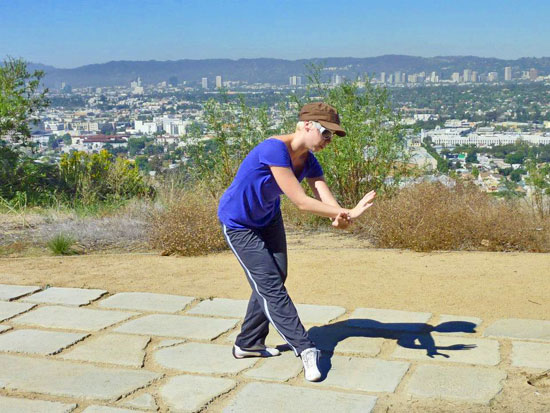
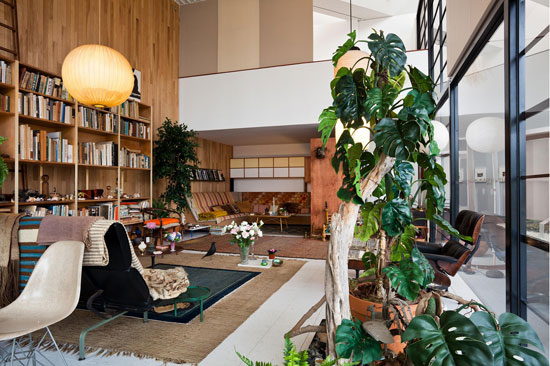
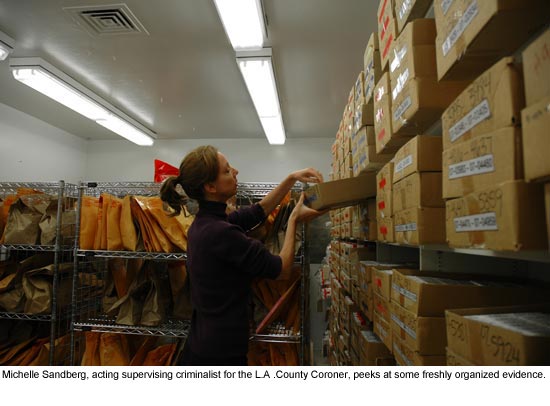
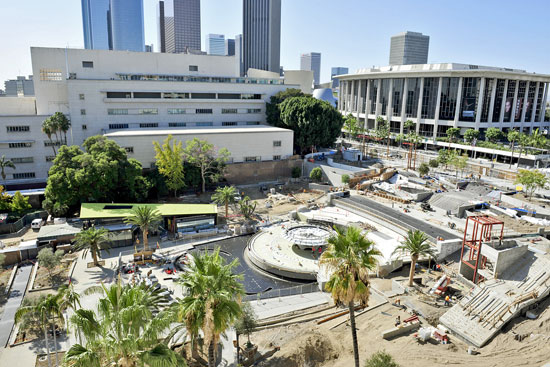
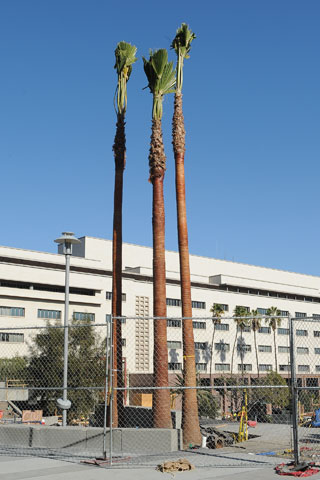
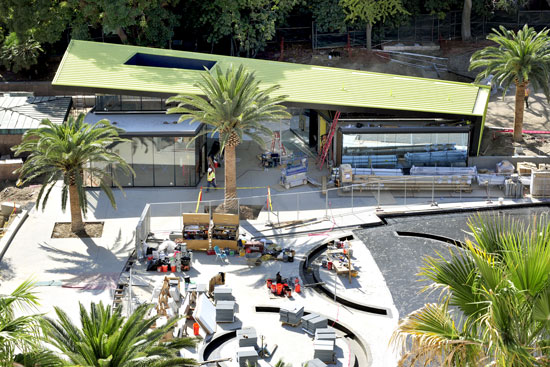





 Check for the latest closure information
Check for the latest closure information








